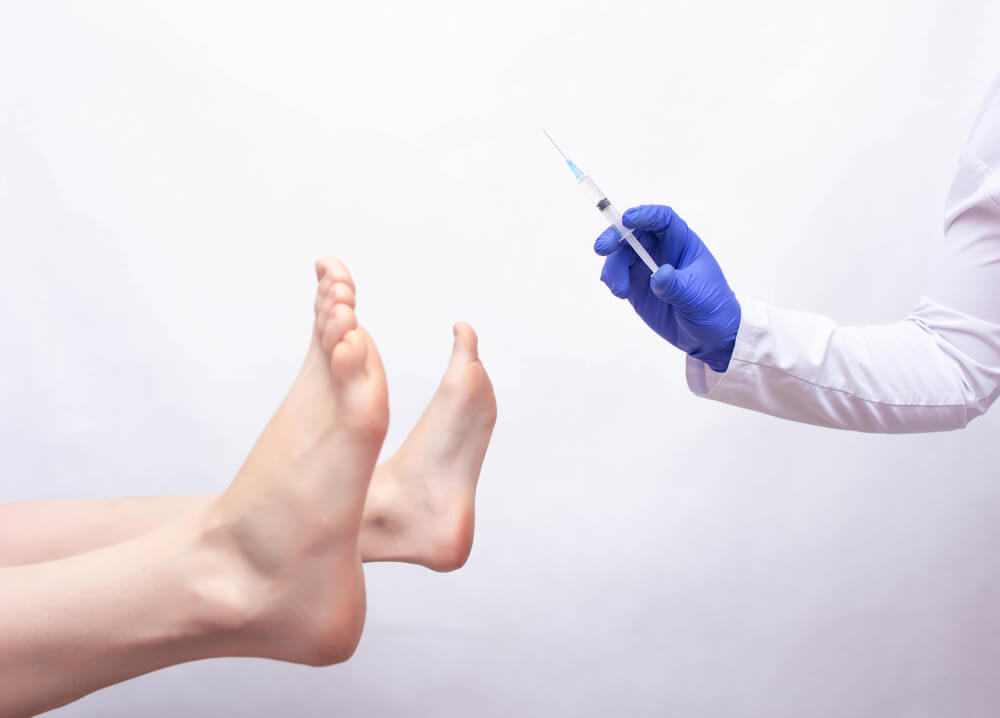Labiaplasty, a surgical procedure aimed at altering the labia minora or majora, has gained attention in recent years as women explore options for genital cosmetic surgery. If you’re considering labia reduction surgery, it’s crucial to be well-informed about the procedure, its potential benefits, and the recovery process. This comprehensive guide addresses key aspects of labial reduction surgery, providing the information you need to make informed decisions.
Understanding Labiaplasty
Labiaplasty is a surgical procedure that involves altering the size or shape of the labia minora (inner lips) or labia majora (outer lips). Women seek labiaplasty for various reasons, including discomfort, aesthetic concerns, or to address asymmetry.
Procedure Overview
The decision to undergo labiaplasty is a personal one, often driven by individual concerns and goals related to the appearance and functionality of the labia. The procedure is meticulously tailored to address specific anatomical features and meet the unique needs of each woman. Here’s a closer look at the procedural aspects:
Labia Minora Reduction
For women seeking labia minora reduction, the surgical process involves the precise removal of excess tissue from the inner lips of the vulva. This excess tissue is carefully trimmed to achieve the desired aesthetic and functional outcome. Subsequently, the edges are delicately sutured to ensure a seamless and natural-looking contour. The goal is to create a result that aligns with the patient’s expectations while preserving the natural form and sensitivity of the labia minora.
Labia Majora Reduction
Labia majora reduction is focused on addressing excess skin of the outer lips of the vulva. During this procedure, the surgeon strategically excises surplus skin to achieve a more refined and contoured appearance. The recontouring process is conducted with precision to enhance the symmetry and balance of the labia majora. Just like in labia minora reduction, the ultimate objective is to create a harmonious result that aligns with the patient’s aesthetic preferences.
Candidacy
Not every woman considering labiaplasty is an automatic candidate, and the decision to undergo the procedure should be approached with careful consideration. Ideal candidates for labiaplasty are generally in good overall health and have realistic expectations regarding the outcomes of the surgery. A crucial step in the process is a comprehensive consultation with a qualified and experienced surgeon. During this consultation, the surgeon assesses the patient’s anatomy, discusses the patient’s goals and expectations, and provides valuable insights into the potential risks and benefits of the procedure. This dialogue ensures that the decision to proceed with labiaplasty is informed, collaborative, and aligned with the patient’s desires.
Benefits and Considerations
Reducing Discomfort
Labiaplasty can alleviate physical discomfort caused by enlarged or elongated labia, especially during activities like exercise, cycling, or sexual intercourse.
Enhancing Aesthetics
Some women seek labiaplasty for cosmetic reasons, desiring a more symmetrical or aesthetically pleasing appearance.
Improved Confidence
For those experiencing emotional distress due to the appearance of their genitalia, labiaplasty may contribute to increased self-esteem and confidence.
Considerations
While labiaplasty offers potential benefits, it’s crucial to consider the permanence of the procedure and the importance of realistic expectations. Additionally, potential risks, such as infection or scarring, should be thoroughly discussed with the surgeon.

Labiaplasty Recovery Time: Nurturing Healing for Optimal Results
Embarking on the journey of labiaplasty involves not only the procedure itself but also a thoughtful and well-guided recovery period. Understanding the phases of recovery is crucial for women considering this cosmetic procedure:
Immediate Postoperative Period
In the immediate aftermath of labiaplasty, patients can expect some degree of swelling and discomfort. These are normal and temporary responses to the surgical intervention. To manage these symptoms effectively, surgeons often recommend the use of ice packs and prescribe pain medications. The application of ice helps to reduce swelling, providing relief and promoting a more comfortable recovery experience. It’s essential for patients to strictly adhere to the prescribed medication regimen and postoperative care instructions to ensure optimal pain management and support the body’s healing process.
Physical Activity
Strenuous activities, including exercise and sexual intercourse, should be avoided during the initial weeks following labiaplasty. This precautionary measure is crucial for preventing undue stress on the healing tissues and minimizing the risk of complications. Patients are advised to prioritize rest and allow their bodies the time needed for proper healing. Light activities, such as walking, are typically encouraged, but patients should consult with their surgeon to determine when they can safely resume more vigorous exercises and intimate activities. Open communication with the surgeon regarding physical activity is integral to fostering a smooth recovery journey.
Follow-up Appointments
Regular follow-up appointments with the surgeon play a pivotal role in ensuring a successful recovery. These appointments provide an opportunity for the surgeon to monitor the healing progress, address any emerging concerns, and offer guidance on the next steps in the recovery journey. Through these follow-up visits, patients can actively participate in their postoperative care, seeking clarification on any uncertainties and receiving reassurance about the healing trajectory. The collaborative relationship between the patient and the surgeon during this phase contributes significantly to achieving optimal results and a high level of satisfaction with the cosmetic outcome.
Potential Risks and Complications: Navigating the Safety of Labiaplasty
Understanding the potential risks and complications associated with labiaplasty is crucial for making informed decisions about the procedure. While labiaplasty is generally safe when performed by a qualified surgeon, it’s essential to be aware of the potential outcomes:
Infection
Infection is a rare but potential risk associated with any surgical procedure, including labiaplasty. To mitigate this risk, patients are typically prescribed antibiotics before and after the surgery. Strict adherence to postoperative care instructions, including maintaining proper hygiene, further minimizes the likelihood of infection. During the recovery period, any signs of infection, such as increased redness, swelling, or unusual discharge, should be promptly reported to the surgeon for evaluation and intervention.
Scarring
Like any surgical intervention, labiaplasty may result in scarring. However, a skilled and experienced surgeon employs meticulous techniques to minimize visible scarring. Incisions are strategically placed and closed with precision to promote optimal healing and reduce the risk of noticeable scars. While some degree of scarring is inevitable, its visibility tends to diminish over time, and many women find that the benefits of the procedure outweigh this potential concern.
Sensation Changes
Changes in sensation, particularly during the early stages of the healing process, are not uncommon. Some women may experience temporary alterations in sensation, including heightened sensitivity or temporary numbness. However, these changes typically resolve as the healing progresses and the nerves regenerate. Patients should openly communicate any concerns about sensation changes with their surgeon during follow-up appointments to ensure appropriate guidance and reassurance.
Pain and Discomfort
Pain and discomfort are natural parts of the postoperative period. While pain is typically managed with prescribed medications, patients should be prepared for temporary discomfort during the initial stages of recovery. Following the surgeon’s postoperative care instructions, including the use of pain medications as directed and avoiding strenuous activities, contributes to a smoother recovery process.
Hematoma or Bleeding
Though uncommon, hematoma (collection of blood outside blood vessels) or excessive bleeding may occur. Surgeons take precautions during the procedure to minimize bleeding, and patients are advised to follow postoperative care guidelines to reduce the risk of complications. Any unusual or persistent bleeding should be promptly reported to the surgeon.

Selecting a Qualified Surgeon: Ensuring a Safe and Satisfying Experience
When considering labiaplasty, selecting a qualified surgeon is paramount to the success of the procedure and your overall satisfaction. Here are key factors to consider when choosing a surgeon:
- Board Certification: Board certification in plastic or reconstructive surgery is a fundamental criterion. This certification ensures that the surgeon has undergone rigorous training, possesses the necessary skills, and adheres to the highest standards of patient care and safety. Verify the surgeon’s credentials through official medical boards to ensure their qualifications align with your expectations.
- Experience in Genital Cosmetic Procedures: While board certification is crucial, it’s equally important to choose a surgeon with specific experience in genital cosmetic procedures, including labiaplasty. Genital cosmetic surgery requires a nuanced understanding of both aesthetics and functionality, and a surgeon with specialized expertise can provide the best possible outcome.
- Portfolio Review: Before-and-after photos of the surgeon’s previous labiaplasty cases offer valuable insights into their skill and aesthetic approach. Pay close attention to the consistency of results, the natural appearance of the genitalia, and the surgeon’s ability to address individual concerns. A comprehensive portfolio showcases the surgeon’s range of capabilities and demonstrates their commitment to patient satisfaction.
- Patient Testimonials: Patient testimonials provide a glimpse into the overall patient experience. Reading about other individuals’ journeys, from the initial consultation to the postoperative period, can offer valuable insights into the surgeon’s patient care, communication skills, and commitment to ensuring a positive outcome. Look for testimonials that resonate with your expectations and concerns, providing a more personalized understanding of the surgeon’s approach.
- Consultation: Schedule a consultation with the surgeon to discuss your goals, expectations, and any questions or concerns you may have. The consultation is an opportunity to assess the surgeon’s communication style, their ability to understand your unique needs, and the level of comfort and trust you feel during the interaction.
- Facility Accreditation: Ensure that the surgical facility where the procedure will take place is accredited. Accreditation ensures that the facility meets stringent safety and quality standards, contributing to a safer surgical environment.
- Ask About Complications: During the consultation, inquire about the surgeon’s experience with potential complications and their approach to addressing them. A skilled and transparent surgeon will openly discuss the risks associated with labiaplasty and provide information on how they manage and mitigate these risks.
Conclusion
In conclusion, labiaplasty is a personal choice that involves careful consideration of potential benefits, risks, and realistic expectations. Consultation with a qualified and experienced surgeon is paramount to ensuring a positive outcome. By understanding the procedure, recovery process, and associated considerations, women can make informed decisions about whether labiaplasty is the right choice for them.
Want to learn more about the procedure? Request an appointment now to learn more about our compassionate services.


